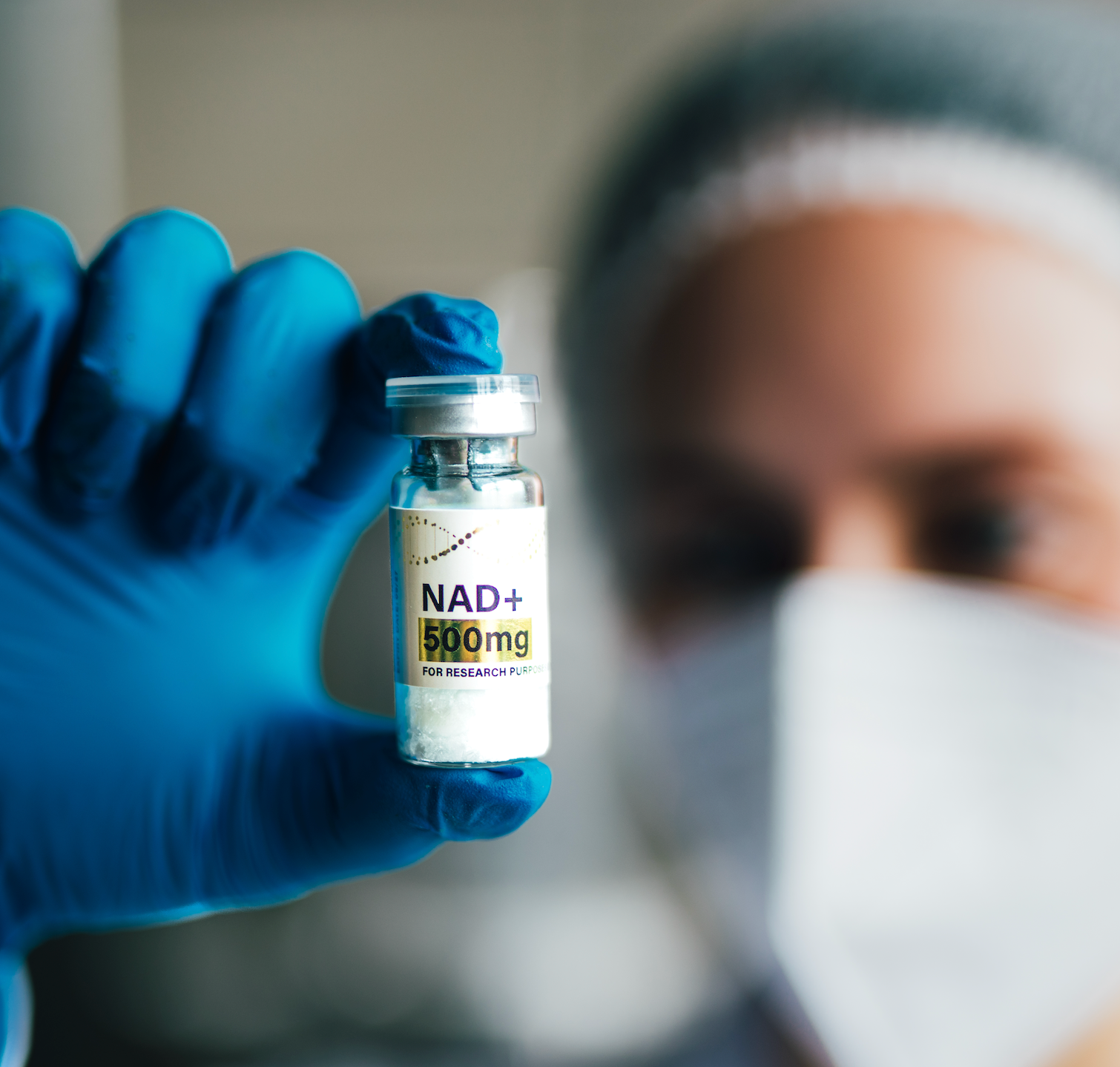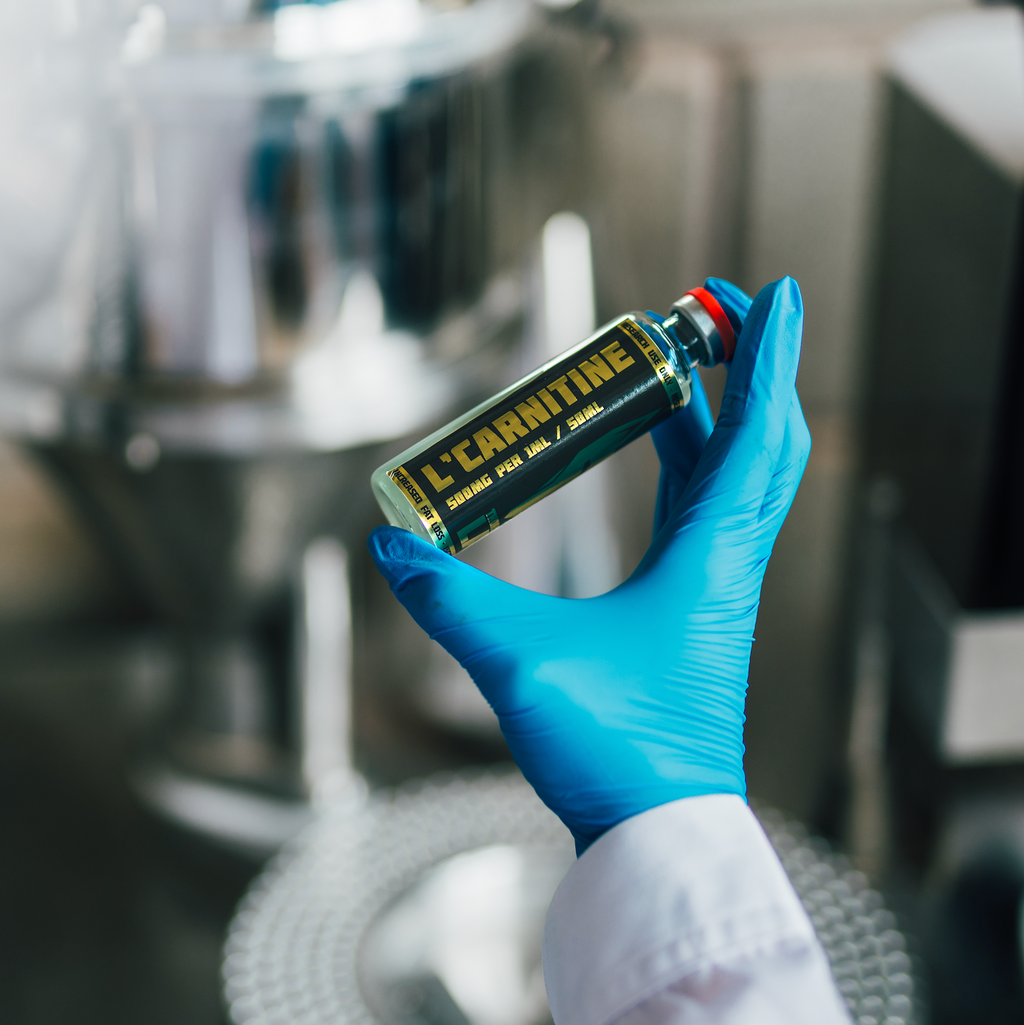🔬 NAD⁺: The Cellular Coenzyme Under Scientific Investigation

For informational and research purposes only. This article does not promote or endorse any form of use or administration. NAD⁺ and related compounds discussed are not approved for human consumption and should only be used in compliance with UK regulations.
What is NAD⁺?
NAD⁺ (nicotinamide adenine dinucleotide) is a critical coenzyme found in all living cells. It plays a central role in energy metabolism, redox reactions, and cellular signalling pathways.
NAD⁺ exists in two forms:
-
NAD⁺ – the oxidised form
-
NADH – the reduced form
The interconversion of NAD⁺ ↔ NADH is essential in electron transport, ATP production, and cell survival mechanisms.
🔍 Scientific Interest in NAD⁺: Why It's Being Studied
Over the last decade, research into NAD⁺ has intensified due to its association with key biological processes, including:
-
Mitochondrial energy production
-
DNA repair and genomic stability
-
Sirtuin activation and gene expression
-
Oxidative stress modulation
-
Cellular ageing pathways
Depletion of NAD⁺ has been linked to age-related metabolic decline, making it a molecule of interest in various experimental ageing and metabolic studies.
⚙️ How NAD⁺ Functions (Mechanistically)
1. Electron Transport in Mitochondria
NAD⁺ acts as a vital electron carrier in cellular respiration, accepting electrons from nutrients and transferring them to the electron transport chain (ETC), where ATP is produced. This process is essential for aerobic energy metabolism.
2. Sirtuin Enzyme Activation
Sirtuins are a family of NAD⁺-dependent enzymes involved in:
-
Gene expression regulation
-
Inflammatory responses
-
Cellular stress resistance
In vitro studies suggest that NAD⁺ levels directly affect sirtuin activity, positioning it as a potential metabolic regulator.
3. DNA Damage Response and PARPs
NAD⁺ serves as a substrate for poly(ADP-ribose) polymerases (PARPs), which are activated during DNA damage. PARPs use NAD⁺ to facilitate DNA repair mechanisms — particularly in oxidative or genotoxic stress conditions.
4. NAD⁺ as a Precursor in Redox Reactions
NAD⁺/NADH are essential cofactors in hundreds of enzymatic reactions, particularly in carbohydrate, fat, and amino acid metabolism.
🧪 Scientific Research Highlights (Investigational Use Only)
Here’s a summary of areas where NAD⁺ has been investigated — primarily in preclinical models, cell lines, and limited human studies conducted under strict research conditions:
🧠 Neurobiology & Cognitive Research
-
Rodent models have shown that NAD⁺ precursors (such as NR or NMN) may support mitochondrial biogenesis and neuron survival in age-related models.
-
Some in vitro studies suggest NAD⁺ may mitigate oxidative stress in neurons, possibly by activating sirtuins (SIRT1/3).
🔬 Ageing & Mitochondrial Function
-
NAD⁺ levels decline with age in many tissues.
-
Animal studies have demonstrated that restoring NAD⁺ levels may influence mitochondrial density and cellular energy status.
-
These findings remain investigational and require more human data.
💓 Cardiovascular Metabolism
-
In rodent and ex vivo heart models, NAD⁺ modulation has been linked to improved cardiac energy metabolism under stress conditions.
-
NAD⁺ may also influence inflammatory markers via sirtuin pathways, although clinical evidence is limited.
🧬 Cellular Senescence and Inflammation
-
Research suggests NAD⁺ may modulate inflammatory gene expression through NF-κB and SIRT1 signalling pathways.
-
Some studies hypothesise a role in inflammageing — the chronic, low-grade inflammation associated with ageing.
🧭 Areas of Active Research Interest (Non-Therapeutic Contexts)
Although NAD⁺ is not authorised for human consumption in the UK without a medical product license or clinical trial approval, it remains a topic of active academic and laboratory-based research, particularly in:
-
Mitochondrial dysfunction studies
-
Nutrient-sensing pathway research
-
Ageing and metabolic stress modelling
-
Cellular NAD⁺ pool dynamics
-
Investigations into oxidative DNA damage and repair
⚠️ Legal and Regulatory Considerations (UK-Specific)
Under UK law:
-
NAD⁺ and its analogues (e.g., nicotinamide mononucleotide [NMN], nicotinamide riboside [NR]) are not licensed medicinal products unless specifically authorised.
-
They must not be marketed, sold, or supplied for human consumption, performance enhancement, or self-experimentation.
-
Research use must be confined to licensed laboratories or institutions with appropriate ethical oversight and must comply with all applicable MHRA and UK government regulations.
-
Promoting or advertising such compounds for unlicensed therapeutic use may breach the Human Medicines Regulations 2012.
📌 Summary
-
NAD⁺ is a naturally occurring molecule that plays a foundational role in energy metabolism, cellular defence, and gene regulation.
-
Interest in NAD⁺ has grown due to its involvement in ageing, mitochondrial function, and cellular resilience.
-
While preclinical and early-stage human research has shown promising results, robust clinical trials are needed to evaluate its effects, safety, and long-term viability.
-
In the UK, NAD⁺ and related compounds are not approved for general human use and must only be handled in regulated research contexts.
📢 Disclaimer
This article is for scientific, research, and educational purposes only. NAD⁺ and related compounds are not approved for human consumption or therapeutic use in the UK unless under specific regulatory approval. Any handling, study, or distribution of these materials must comply with UK law and MHRA regulations. No health, performance, or therapeutic claims are made or implied.


